 W
WThe Academy of Sciences of the Soviet Union was the highest scientific institution of the Soviet Union from 1925 to 1991, uniting the country's leading scientists, subordinated directly to the Council of Ministers of the Soviet Union.
 W
WThe Accademia Nazionale Virgiliana di Scienze Lettere ed Arti is an Italian scientific institution.
 W
WThe Royal Academy of Cambodia is the national academy and university of Cambodia. RAC was originally established by a Royal Decree of 25 August 1965 and placed under the Office of the Council of Ministers. However, by the time war broke out in Cambodia in 1970 it had still not started operations, and in the following years it disappeared completely amidst the turmoil of the Khmer Rouge period. Efforts to revive the Royal Academy began in March 1997 with the establishment of the Academy of Cambodian History, later the Academy of History. In 1999 this institution became the Royal Academy of Cambodia (RAC), with five sub institutes - the Institute of Biology, Medicine and Agriculture, the Institute of Culture and Fine Arts, the Institute of Humanities and Social Sciences, the Institute of National Language, and the Institute of Science and Technology.
 W
WThe Royal Danish Academy of Sciences and Letters is a Danish non-governmental national academy for the advancement of science that was founded in 1742. It is based in the Carlsberg Foundation's building at the corner of H. C. Andersens Boulevard and Dantes Plads in central Copenhagen.
 W
WThe Young Academy of Denmark is an independent Science Academy under the Royal Danish Academy of Sciences and Letters and was established in 2011 as a scientific forum for young, talented researchers in Denmark. The academy is interdisciplinary and deals with research and educational policy, dissemination of research and interdisciplinary collaboration. The members meet at the Royal Danish Academy of Sciences and Letters' domicile at the corner of H. C. Andersens Boulevard and Dantes Plads in central Copenhagen approximately once a month. On average, eight members are admitted per year and membership is limited to five years.
 W
WThe Royal Naval Academy of France was founded at Brest by a ruling of 31 July 1752 by Antoine Louis de Rouillé, comte de Jouy, Secretary of State for the Navy. This institutionalised an earlier initiative by a group of officers from the Brest fleet headed by the artillery captain Sébastien Bigot de Morogues who all wanted to contribute to the modernisation of the French Navy, a group which had very quickly received the approbation of Louis XV.
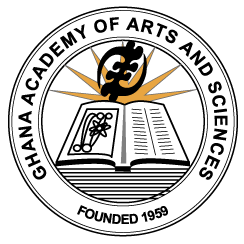 W
WThe Ghana Academy of Arts and Sciences (GAAS) is a learned society for the arts and sciences based in Accra, Ghana. The institution was founded in November 1959 by Kwame Nkrumah with the aim to promote the pursuit, advancement and dissemination of knowledge in all branches of the sciences and the humanities.
 W
WThe Academy of Athens is Greece's national academy, and the highest research establishment in the country. It was established in 1926, and operates under the supervision of the Ministry of Education. The Academy's main building is one of the major landmarks of Athens.
 W
WThe Akademi Kreyòl Ayisyen, known in French as the Académie du Créole Haïtien and in English as the Haitian Creole Academy, is the language regulator of Haitian Creole. It is composed of up to 55 scholars under the leadership of Pierre-André Pierre.
 W
WThe Indian Academy of Sciences, Bangalore was founded by C. V. Raman, and was registered as a Society on 24 April 1934. Inaugurated on 31 July 1934, it began with 65 founding fellows. The first general meeting of Fellows, held on the same day, elected Raman as president, and adopted the constitution of the Academy.
 W
WThe Indian National Science Academy (INSA) is a national academy in New Delhi for Indian scientists in all branches of science and technology.
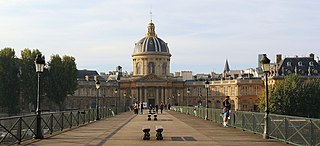 W
WThe Institut de France is a French learned society, grouping five académies, including the Académie Française.
 W
WThe Academy of Persian Language and Literature (APLL) is the regulatory body for the Persian language, headquartered in Tehran, Iran. Formerly known as the Academy of Iran, it was founded on May 20, 1935 by the initiative of Reza Shah, the founder of Pahlavi dynasty.
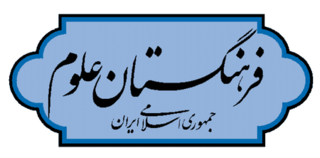 W
WThe Academy of Sciences of the Islamic Republic of Iran was established in 1988. It is one of the four academies of the Islamic Republic of Iran. The other three are: Iranian Academy of Medical Sciences, Iranian Academy of the Arts and Academy of Persian Language and Literature.
 W
WThe Royal Irish Academy, based in Dublin, is an academic body that promotes study in the sciences, humanities and social sciences. It is one of Ireland's premier learned societies and cultural institutions. The Academy was established in 1785 and granted a royal charter in 1786. As of 2019 the RIA has around 600 members, regular members being Irish residents elected in recognition of their academic achievements, and Honorary Members similarly qualified but based abroad; a small number of members are elected in recognition of non-academic contributions to society.
 W
WIsrael Academy of Sciences and Humanities, based in Jerusalem, was established in 1961 by the State of Israel to foster contact between Israeli scholars in the sciences and humanities and create a think tank for advising the government on research projects of national importance. Its members include many of Israel's most distinguished scholars.
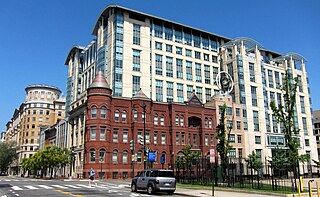 W
WThe National Academies of Sciences, Engineering, and Medicine is the collective scientific national academy of the United States. The name is used interchangeably in two senses: (1) as an umbrella term for its three quasi-independent honorific member organizations the National Academy of Sciences (NAS), the National Academy of Engineering (NAE), and the National Academy of Medicine (NAM); and (2) as the brand for studies and reports issued by the operating arm of the three academies, the National Research Council (NRC). The NRC was first formed in 1916 as an activity of the NAS. Now jointly governed by all three academies, it produces some 200 publications annually which are published by the National Academies Press.
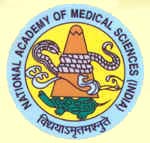 W
WNational Academy of Medical Sciences (India), better known by its acronym, NAMS, is a nodal agency under the Government of India, which acts as an advisory body to the Government in matters related to National Health Policy and Planning and as a promoting agency for continuing medical education (CME) for medical and health professionals. It is a part of the Inter Academy Medical Panel (IAMP), a global network of medical academies. The Academy is headquartered at NAMS House, at Ansari Nagar, neighbouring the All India Institute of Medical Sciences and the Indian Council of Medical Research House, along Mahatma Gandhi Marg, in the Indian capital of New Delhi.
 W
WThe Royal Academy for Dutch Language and Literature is an institution focused on the study and promotion of the Dutch language in Flanders. It is the Dutch-speaking counterpart of the Académie royale de langue et de littérature françaises de Belgique and one of Belgium's numerous academies.
 W
WThe Pakistan Academy of Letters (PAL) is a national academy with its main focus on Pakistani literature and related fields. It is the largest and the most prestigious learned society of its kind in Pakistan, with activities throughout the nation. It was established in July 1976 by a group of renowned Pakistani writers, poets, essayists, playwrights, and translators, inspired by the Académie Française.
 W
WThe Romanian Academy is a cultural forum founded in Bucharest, Romania, in 1866. It covers the scientific, artistic and literary domains. The academy has 181 acting members who are elected for life.
 W
WThe Sahitya Akademi, India's National Academy of Letters, is an organisation dedicated to the promotion of literature in the languages of India. Founded on 12 March 1954, it is supported by, though independent of, the Indian government. Its office is located in Rabindra Bhavan near Mandi House in Delhi.
 W
WThe Royal Society is the national academy of Thailand in charge of academic works of the government.
 W
WThe National Academy of Public Administration was founded by James E. Webb, then-administrator of NASA, and other leading public administration practitioners in 1967 and chartered under Title 36 of the United States Code in 1984 under Pub.L. 98–257. The Academy is a nonprofit, nonpartisan organization focused on analyzing emerging trends in governance and public administration. It is one of the two organizations chartered by Congress in this manner. Though the Academy's funding comes primarily from studies that are Congressionally requested or mandated, it is not considered a government agency. It is based in Washington, D.C. The group established the Louis Brownlow Book Award in 1968.